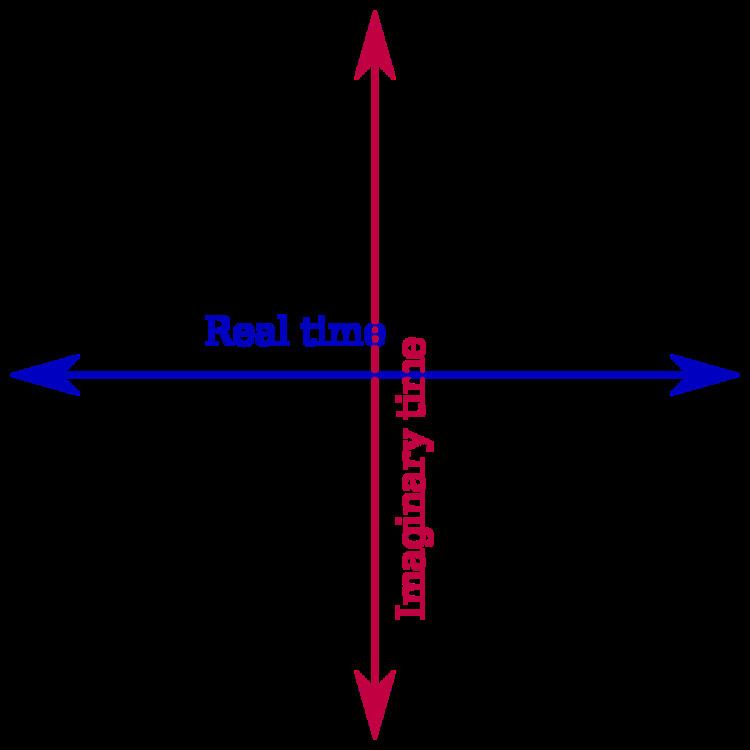 | ||
Imaginary time is a concept derived from special relativity and quantum mechanics and is mathematically convenient in connecting quantum mechanics with statistical mechanics.
Contents
If we imagine "regular time" as a horizontal line running between "past" in one direction and "future" in the other, then imaginary time would run perpendicular to this line as the imaginary numbers run perpendicular to the real numbers in the complex plane. Imaginary time is not imaginary in the sense that it is unreal or made-up — it simply runs in a direction different from the type of time we experience. In essence, imaginary time is a way of looking at the time dimension as if it were a dimension of space: you can move forward and backward along imaginary time, just like you can move right and left in space.
In quantum mechanics
Imaginary time
In cosmology
Imaginary time is also used in cosmology. It is used to describe models of the universe in physical cosmology. Stephen Hawking popularized the concept of imaginary time in his book A Brief History of Time.
The concept is useful in cosmology because it can help to smooth out gravitational singularities in models of the universe (see Hartle–Hawking state), where known physical laws do not apply. The Big Bang, for example, appears as a singularity in "regular time." But, when visualized with imaginary time, the singularity is removed and the Big Bang functions like any other point in spacetime.
